 The Whitney Laboratory for Marine Bioscience
The Whitney Laboratory for Marine Bioscience

The Whitney Lab has its origins in the meeting of two visionaries: Cornelius Vanderbilt (Sonny) Whitney (shown left), who was one of the founders of Marineland, the world’s first oceanarium, and Dr. Sam Gurin, a Professor of Biochemistry at the University of Florida and formerly Dean of Medicine at the University of Pennsylvania (shown right).
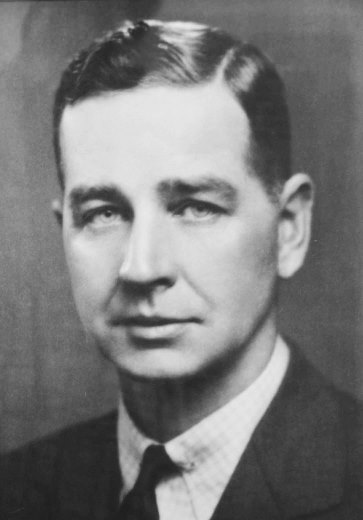
In ’60s, early ’70s, Sam had set out to explore marine labs around the country. He did this because he recognized that some of the most important scientific work being done on topics such as the electrical basis of nerve function and the development of embryos was being done at marine labs. That work was being performed at a select few locations and only during the summer months. For the rest of the year the scientists in question returned to their home institutions where they had no access to the animals that were yielding such important information. None of the year-round marine labs that Sam visited were focused on what might be termed “marine biomedical research”. Sam wondered what the impact would be of a year-round marine laboratory focused on bio-medical research.
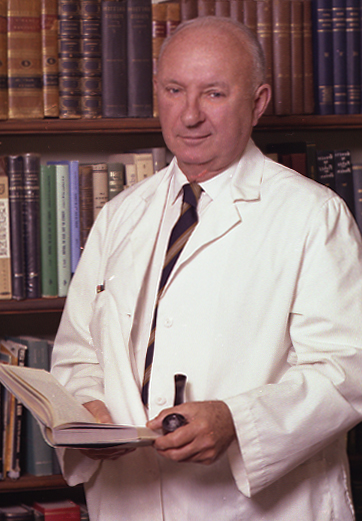
At about this time, Marineland was having serious problems with health of their dolphins. Melba Caldwell, a resident scientist who, with her husband, David, was studying dolphin vocalization and communication, prompted Mr. Whitney about how helpful it would be to have a serious research laboratory on site to study dolphin disease. This idea was strongly supported by B.C. (Cliff) Townsend, the Marineland Curator and later manager. The final piece of the puzzle was Mr. Whitney’s realization that marine animals did not seem to suffer from the same ailments (such as cancer and heart disease) as humans and wondered if it might be possible to learn something about those diseases by studying marine animals.
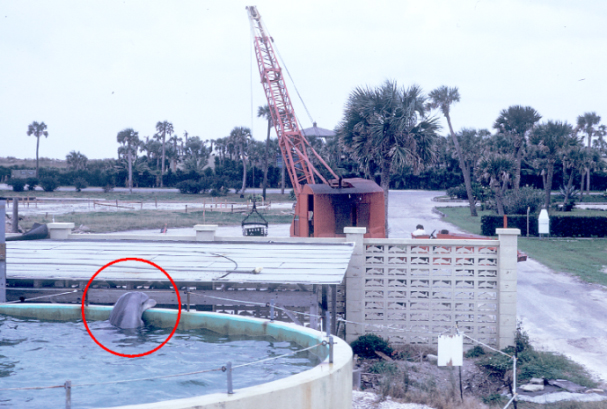
One of Marineland’s dolphins (circled) takes a great interest in the construction of the Whitney Lab.
Somewhere along the way, Sam met Mr. Whitney and the rest is history. Mr. Whitney donated two acres of land in the Town of Marineland, together with half the construction costs to the University of Florida, which matched Mr. Whitney’s contribution and the Lab was built. It was dedicated on a cold and wet January day in 1974 and Dr. Sam Gurin became the first director. Sam was accompanied from Gainesville by Dr. Bill Carr, a Professor of Zoology, whose personal recollections of the origins of the Whitney Lab make for very interesting reading. Two years after the opening of the Whitney Laboratory for Experimental Marine Biology and Medicine, a second donation from Mr. Whitney and his wife Marylou paid for construction of Whitney Hall and its associated housing. The Lab was off and running.
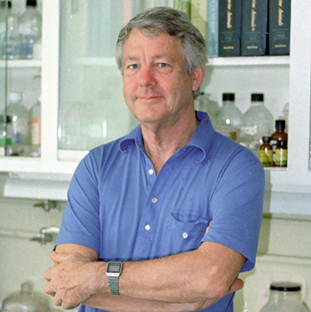
Whitney’s second director
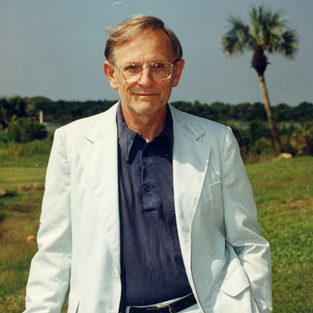
Whitney’s third director
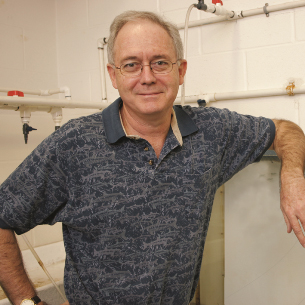
Whitney's fourth director
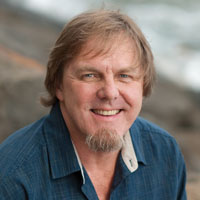
Whitney's current director
Since the founding of the Lab, there have been five Directors, Dr. Sam Gurin, Dr. Dick Smith, Dr. Mike Greenberg, Dr. Peter Anderson and the current Director, Dr. Mark Martindale. The Lab’s research focus for the past 40 years has been in the area of marine biomedical research in keeping with Sam Gurin’s early vision.
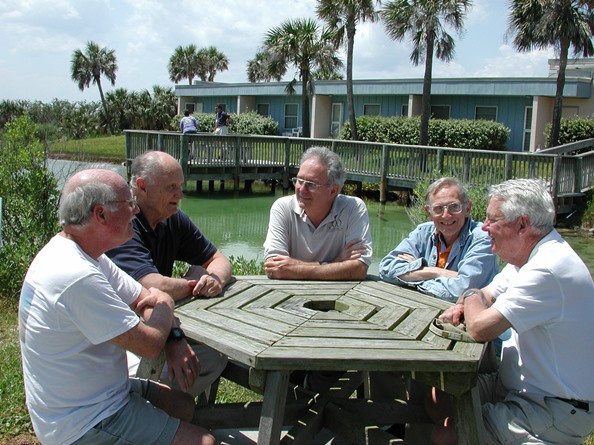
Important to the development of the laboratory has been its dedicated research faculty, as well as key players like Jim Netherton (shown with several former Directors), who served as a chemist and laboratory manager for close to 30 years. His role in the community while serving as Mayor of Marineland helped to shape some of the critical conservation efforts and reserves in the Matanzas Basin.
Another key factor in the development of the lab has been its outreach and education programs. Originally spearheaded by Dr. Barbara Battelle, Karen Kempler and several critical docents, the National Science Foundation Research Experience program, Day at the Whitney and even the Center for Marine Sciences building would not be here without the hard work and dedication of dedicated staff, docents, donors and early supporters of science outreach and education. These programs continue to flourish to this day.
From 2013 to 2016, Whitney Laboratory managed Seahorse Key Marine Laboratory on the Gulf Coast of Florida, located in the Cedar Keys National Wildlife Refuge. Also beginning in 2013, Whitney Lab began development of a new Sea Turtle Rehabilitation Hospital, which opened in 2015. The hospital leverages the lab’s existing expertise and reputation in the cell and molecular biology of marine animals to address emerging diseases. This brings the lab full circle to Mr. Whitney’s original rationale for creating Whitney Laboratory while moving forward using cutting-edge science.